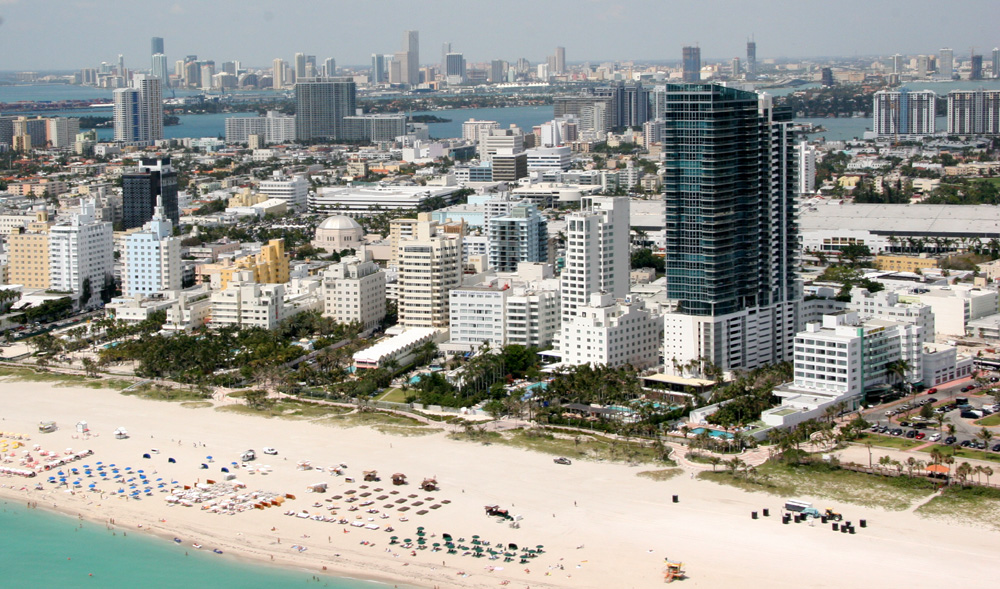
Moving to Miami Beach, Florida: A Comprehensive Relocation Guide
Considering moving to Miami Beach, Florida? This iconic barrier island city offers legendary beaches, Art Deco architecture, and resort lifestyle. With approximately 92,000 residents in 2025, Miami Beach combines world-famous South Beach energy with quieter residential neighborhoods and international glamour.
Demographic Profile to Consider If Moving to Miami Beach:
Miami Beach’s 2025 population is approximately 92,000 residents on this barrier island between Biscayne Bay and the Atlantic Ocean. The median age is around 42 years, with diverse residents including young professionals, international residents, hospitality workers, and affluent retirees. The population is approximately 55% Hispanic, 35% White non-Hispanic, with significant international representation. Miami Beach features distinct areas from South Beach’s Art Deco Historic District and nightlife to Mid-Beach’s residential towers to North Beach’s quieter family neighborhoods. The city’s Art Deco architecture, preserved from the 1930s-40s, creates iconic visual identity. Miami Beach attracts international residents, models, artists, hospitality professionals, and wealthy second-home owners. The cosmopolitan character creates a resort atmosphere year-round. Find trusted local services for moving, living, and working in Miami Beach.Miami Beach Relocation Directory
Cost of Living to Consider If Moving to Miami Beach:
Miami Beach represents ultra-premium pricing. Median home values range from $700,000 to $1.5 million+ in 2025, with South Beach condos and oceanfront properties commanding significantly more. The median household income is approximately $60,000, though wealth concentration is significant. Rental properties average $2,800 to $5,000+ monthly. Florida’s lack of state income tax provides some benefit. Overall cost of living is among Florida’s highest, with housing costs, parking, and beach location driving prices. Miami Beach attracts wealthy international buyers and second-home owners. Many hospitality workers face severe affordability challenges. The combination of limited island space, global demand, and resort character creates exclusivity. Costs vary dramatically from South Beach luxury to North Beach moderation.
Economy and Job Market:
Miami Beach’s economy revolves entirely around tourism and hospitality. Major employers include hotels ranging from boutique to luxury brands, restaurants, nightclubs, and entertainment venues. South Beach’s hospitality industry employs thousands. Convention centers host events. Real estate and property management sectors serve vacation rentals and second homes. Art galleries and retail support the tourism economy. Many residents work in hospitality, service industries, or creative fields. Some commute to downtown Miami for professional employment. The seasonal tourism creates employment fluctuations. The economy operates with significant income inequality between wealthy residents/visitors and service workers. Typical industries include hospitality, entertainment, real estate, and arts.
Education:
Miami-Dade County Public Schools serves Miami Beach students with schools including Miami Beach Senior High School and various elementary and middle schools. The district operates throughout Miami-Dade County. Private schools in the area provide alternatives. The city’s resort character means limited school-age population relative to overall residents. Miami’s universities including University of Miami and Florida International University are accessible. The educational infrastructure serves the permanent population adequately.
Recreation and Lifestyle:
Miami Beach offers world-famous beaches stretching the island’s entire oceanfront. South Beach’s iconic Art Deco architecture, Ocean Drive, and Lincoln Road create legendary scenes. The city hosts Art Basel Miami Beach attracting global art collectors. Nightlife includes world-class clubs, bars, and entertainment venues operating until dawn. The city features diverse dining from casual beach cafes to celebrity chef restaurants. South Pointe Park offers southern beach access and views. The Bass Museum presents contemporary art. Residents enjoy beach activities, water sports, and yacht watching year-round. The lifestyle emphasizes beach culture, nightlife, fitness, and seeing-and-being-seen social scenes. The tropical climate creates perpetual summer enabling constant outdoor activity. The community includes everyone from models to families to international jet-setters.
Healthcare and Services:
Miami Beach residents access healthcare through Mount Sinai Medical Center on Miami Beach providing comprehensive services. Additional facilities in Miami offer specialized care. Numerous medical offices and specialists serve the area. The region’s extensive healthcare infrastructure ensures quality medical access.
Transportation:
Miami Beach is connected to Miami via causeways including MacArthur, Venetian, and Julia Tuttle. Miami International Airport is approximately 20-30 minutes west. Miami Beach Trolley provides free local transportation. Miami-Dade Transit buses serve the island. Most residents use personal vehicles, ride-sharing, or bicycles. South Beach offers walkability. Parking is challenging and expensive. Traffic congestion occurs on causeways during peak times. Many residents don’t own cars given urban density.
Conclusion:
Moving to Miami Beach in 2025 offers iconic island living with legendary beaches, Art Deco architecture, and international glamour. The city’s combination of South Beach energy, resort lifestyle, and year-round tropical summer makes it ideal for those seeking America’s most famous beach destination, where every day feels like vacation and the party never stops.

